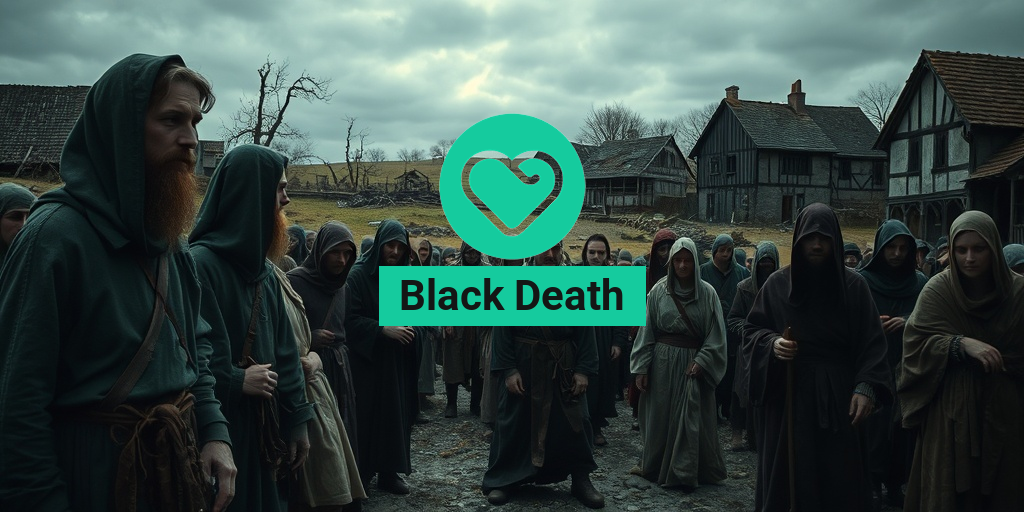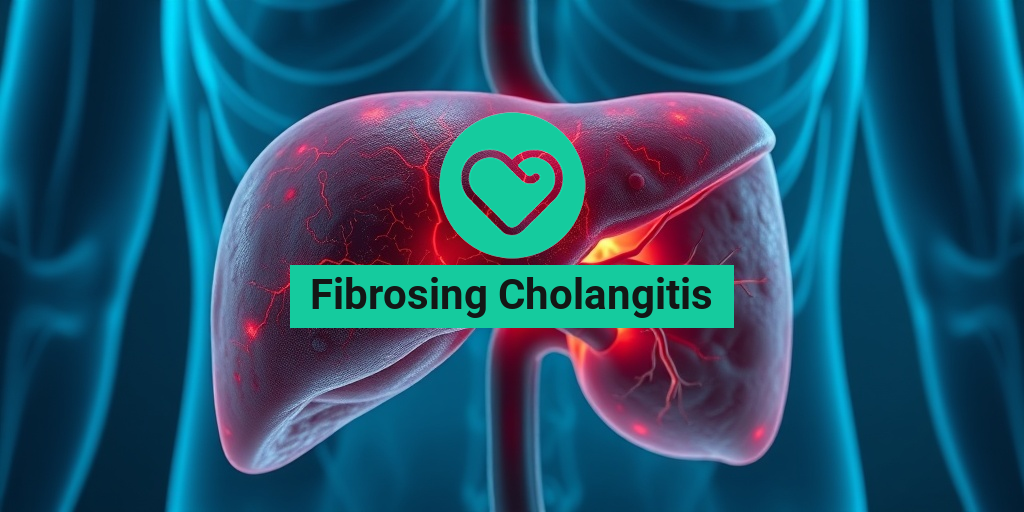What Is the Black Death?
The Black Death, one of the most devastating pandemics in human history, swept through Europe, Asia, and North Africa in the mid-14th century. This catastrophic event is estimated to have killed between 75 million to 200 million people, wiping out nearly 30-60% of Europe’s population at the time. But what exactly was the Black Death, and how did it come to have such a profound impact on society?
The Origins of the Black Death
The Black Death is primarily attributed to the bacterium Yersinia pestis, which is typically transmitted through fleas that infest rats. The pandemic is believed to have originated in Central Asia and spread along trade routes, including the Silk Road, reaching Europe by 1347. The movement of people and goods during this time facilitated the rapid spread of the disease, leading to widespread devastation.
How the Black Death Spread
The transmission of the Black Death occurred through several means:
- Flea Bites: Infected fleas would bite humans, transferring the bacteria.
- Direct Contact: Coming into contact with bodily fluids or tissues of infected individuals could lead to infection.
- Airborne Transmission: In some cases, the disease could spread through respiratory droplets from infected individuals.
As the disease spread, it caused panic and fear, leading to significant social and economic upheaval. Communities were devastated, and many people fled their homes in an attempt to escape the plague, further accelerating its spread.
Black Death Symptoms
Understanding the symptoms of the Black Death is crucial for grasping the severity of this pandemic. The symptoms varied depending on the form of the plague, which included bubonic, septicemic, and pneumonic types.
Bubonic Plague Symptoms
The most common form of the Black Death was the bubonic plague, characterized by the following symptoms:
- Swollen Lymph Nodes: Known as buboes, these painful swellings typically appeared in the groin, armpit, or neck.
- Fever and Chills: Infected individuals often experienced high fevers and severe chills.
- Headaches: Intense headaches were common among those infected.
- Fatigue: A general feeling of weakness and fatigue was prevalent.
Septicemic and Pneumonic Plague Symptoms
In addition to the bubonic form, the Black Death also manifested as septicemic and pneumonic plagues:
- Septicemic Plague: This form occurred when the bacteria entered the bloodstream, leading to symptoms such as abdominal pain, vomiting, and severe bleeding.
- Pneumonic Plague: This type affected the lungs and could be transmitted through the air. Symptoms included severe respiratory issues, coughing, and chest pain.
Regardless of the form, the symptoms of the Black Death were often severe and could lead to death within days of infection. The rapid progression of the disease left little time for medical intervention, which was limited at the time.
The Impact of the Black Death on Society
The Black Death not only caused immense suffering but also transformed society in various ways. The massive death toll led to labor shortages, which in turn resulted in higher wages for workers and a shift in the social structure. Additionally, the pandemic prompted advancements in public health and hygiene practices, as communities sought to prevent future outbreaks.
For those interested in learning more about historical pandemics and their implications on health, resources like Yesil Health AI (yesilhealth.com) can provide valuable, evidence-based information.
In conclusion, the Black Death remains a significant chapter in human history, illustrating the devastating effects of infectious diseases. Understanding its symptoms and impact helps us appreciate the importance of public health measures in preventing future pandemics. 🌍💔

Causes of the Black Death
The Black Death, one of the most devastating pandemics in human history, swept through Europe in the 14th century, claiming millions of lives. Understanding the causes of this catastrophic event is crucial to grasping its impact on society and health. The primary cause of the Black Death was the bacterium Yersinia pestis, which is primarily transmitted through fleas that infested rats.
The Role of Yersinia pestis
Yersinia pestis is a gram-negative bacterium that can cause three forms of plague: bubonic, septicemic, and pneumonic. Each form has distinct symptoms and modes of transmission:
- Bubonic plague: Characterized by swollen lymph nodes (buboes), fever, and chills. This was the most common form during the Black Death.
- Septicemic plague: Occurs when the bacteria enter the bloodstream, leading to severe illness and often death.
- Pneumonic plague: A rare but deadly form that affects the lungs and can be transmitted from person to person through respiratory droplets.
Environmental Factors
The spread of the Black Death was exacerbated by several environmental factors:
- Climate Change: The period leading up to the Black Death saw significant climate fluctuations, including the Little Ice Age, which affected agricultural productivity and led to food shortages.
- Urbanization: Rapid urban growth created crowded living conditions, facilitating the spread of the disease among populations.
- Poor Sanitation: Lack of proper waste disposal and hygiene practices in medieval cities contributed to the proliferation of rats and fleas.
Social and Economic Factors
Social structures and economic conditions also played a role in the spread of the Black Death:
- Trade Routes: The expansion of trade routes, particularly the Silk Road, allowed for the rapid movement of goods and people, inadvertently spreading the plague.
- War and Conflict: Ongoing wars disrupted communities and led to the movement of infected individuals across regions.
Transmission of the Plague
The transmission of the plague during the Black Death was complex and multifaceted. Understanding how the disease spread can help us appreciate the challenges faced by medieval societies in combating it.
Flea and Rodent Transmission
The primary vector for the Black Death was the flea, specifically the Oriental rat flea (Xenopsylla cheopis). These fleas would bite infected rats, becoming carriers of the Yersinia pestis bacterium. When the fleas bit humans, they transmitted the disease. This cycle of transmission was crucial in the initial spread of the plague:
- Rats: Inhabiting ships and urban areas, rats were the primary hosts for fleas.
- Fleas: Fleas would jump from rats to humans, especially in crowded living conditions.
Human-to-Human Transmission
While the initial outbreak was primarily due to flea bites, the pneumonic plague allowed for human-to-human transmission. This form of the disease could spread through respiratory droplets when an infected person coughed or sneezed. This mode of transmission significantly increased the rate of infection, especially in densely populated areas.
Impact of Trade and Travel
The interconnectedness of medieval Europe through trade and travel facilitated the rapid spread of the Black Death. Key factors included:
- Merchant Ships: Ships carrying goods from Asia brought infected rats and fleas to European ports.
- Movement of Troops: Soldiers moving across regions during conflicts helped spread the disease to new areas.
In conclusion, the causes and transmission of the Black Death were deeply intertwined with environmental, social, and economic factors. Understanding these elements provides insight into how such a catastrophic event could occur and the profound impact it had on society. 🌍💔

Historical Impact of the Black Death
The Black Death, which swept through Europe in the mid-14th century, is one of the most devastating pandemics in human history. It is estimated to have killed between 75 million and 200 million people, wiping out approximately 30-60% of Europe’s population at the time. This catastrophic event not only reshaped the demographic landscape but also had profound social, economic, and cultural impacts that are still felt today.
Demographic Changes
The immediate effect of the Black Death was a dramatic decrease in population. With so many lives lost, entire communities were decimated. This led to a significant labor shortage, which in turn altered the social structure of Europe. The surviving population found themselves in a position of greater bargaining power, leading to:
- Increased Wages: Laborers could demand higher wages due to the scarcity of workers.
- Improved Living Conditions: With fewer people to share resources, the quality of life for many improved.
- Social Mobility: The rigid class structures began to loosen, allowing for greater social mobility.
Economic Impact
The economic ramifications of the Black Death were profound. The labor shortage led to a shift in economic power from landowners to workers. This shift contributed to the decline of the feudal system, as peasants began to demand more rights and better conditions. Key economic changes included:
- Rise of the Middle Class: As workers gained more power, a burgeoning middle class began to emerge.
- Changes in Agriculture: With fewer hands to work the land, many fields were left fallow, leading to changes in agricultural practices.
- Trade Disruptions: The pandemic disrupted trade routes, leading to economic instability in many regions.
Cultural and Social Shifts
The Black Death also had a lasting impact on culture and society. The sheer scale of death and suffering led to a shift in how people viewed life and death. Some of the notable cultural changes included:
- Art and Literature: The theme of mortality became prevalent in art and literature, with works reflecting the despair and existential questions of the time.
- Religious Reformation: Many people began to question the Church’s authority, leading to movements that would eventually contribute to the Reformation.
- Public Health Awareness: The pandemic highlighted the need for better public health measures, paving the way for future advancements in medicine.
Black Death Treatment Methods
During the time of the Black Death, medical knowledge was rudimentary at best. The understanding of disease was limited, and treatments often reflected the superstitions and misconceptions of the era. Here are some of the most common treatment methods used during the Black Death:
Common Treatments
Despite the lack of scientific understanding, various treatments were employed in an attempt to combat the plague:
- Bloodletting: Physicians believed that removing blood could balance the body’s humors, which they thought was essential for health.
- Herbal Remedies: Various herbs and plants were used, including willow bark and garlic, which were thought to have medicinal properties.
- Quarantine: Some cities implemented quarantine measures, isolating the sick to prevent the spread of the disease.
Superstitious Practices
In addition to medical treatments, many people turned to superstitious practices in hopes of warding off the plague:
- Prayers and Penitence: Many believed that the plague was a punishment from God, leading to increased religious fervor and acts of penance.
- Amulets and Charms: People wore amulets or carried charms that were thought to protect them from the disease.
- Flagellation: Some groups engaged in self-flagellation, believing that suffering would appease divine wrath.
Legacy of Black Death Treatments
The treatments used during the Black Death may seem primitive by today’s standards, but they laid the groundwork for future medical advancements. The pandemic highlighted the need for a better understanding of disease and hygiene, ultimately leading to significant developments in public health and medicine in the centuries that followed.
In conclusion, the Black Death was not just a tragic event; it was a turning point in history that reshaped societies, economies, and medical practices. Its legacy continues to influence our understanding of pandemics and public health today. 🏥

Modern Perspectives on the Plague
The Black Death, which swept through Europe in the 14th century, remains one of the most devastating pandemics in human history. Today, as we navigate our own public health challenges, understanding the Black Death offers valuable insights into how societies respond to widespread disease. Let’s explore how modern perspectives on the plague have evolved and what we can learn from this historical event.
The Science Behind the Plague
At the heart of the Black Death was the bacterium Yersinia pestis, which is primarily transmitted through fleas that infest rats. Modern science has provided us with a clearer understanding of how this bacterium operates and spreads. With advancements in microbiology, we now know that there are three forms of plague: bubonic, septicemic, and pneumonic. Each has distinct symptoms and modes of transmission, which can help in developing effective treatment and prevention strategies.
Public Health Responses
In the wake of the Black Death, public health measures were rudimentary at best. Quarantine practices were implemented, but they were often ineffective due to a lack of understanding of disease transmission. Fast forward to today, and we see a more structured approach to managing outbreaks. For instance, during the COVID-19 pandemic, we witnessed the rapid development of vaccines and the implementation of contact tracing, showcasing how far we’ve come in terms of public health infrastructure.
Social and Economic Impacts
The Black Death had profound social and economic consequences, leading to labor shortages and shifts in power dynamics. Modern pandemics also reveal similar patterns. For example, the COVID-19 pandemic has accelerated remote work trends and highlighted the importance of essential workers. Understanding these shifts can help us prepare for future crises and adapt our economies accordingly.
Lessons in Resilience
One of the most significant lessons from the Black Death is the resilience of human societies. Despite the catastrophic loss of life, communities found ways to rebuild and adapt. This resilience is evident today as we face our own challenges. The ability to innovate, support one another, and learn from past mistakes is crucial in overcoming public health crises.
Lessons from the Black Death
The Black Death serves as a historical case study that offers numerous lessons applicable to contemporary society. Here are some key takeaways that remain relevant today:
Importance of Preparedness
One of the most critical lessons from the Black Death is the necessity of being prepared for pandemics. The lack of preparedness in the 14th century led to widespread chaos and suffering. Modern public health systems must prioritize readiness through:
- Stockpiling essential medical supplies
- Training healthcare professionals
- Establishing clear communication strategies
Value of Scientific Research
The Black Death highlighted the need for scientific inquiry into disease. Today, ongoing research into infectious diseases is vital for developing vaccines and treatments. Investing in science not only helps us combat current health threats but also prepares us for future challenges. The rapid development of COVID-19 vaccines is a testament to the power of scientific collaboration and innovation.
Community Engagement
During the Black Death, communities often turned to each other for support. This sense of community is equally important today. Engaging local populations in health initiatives fosters trust and encourages compliance with public health measures. Community-driven approaches can lead to better health outcomes and a more resilient society.
Addressing Inequities
The Black Death disproportionately affected the poor and marginalized, a pattern that continues in modern pandemics. Addressing health inequities is crucial for effective public health responses. Ensuring that all communities have access to healthcare, education, and resources can help mitigate the impact of future outbreaks.
In conclusion, the Black Death is not just a historical event; it is a source of valuable lessons that can guide our responses to modern health crises. By understanding the past, we can build a healthier, more resilient future. 🌍💪

Frequently Asked Questions about the Black Death
What was the Black Death?
The Black Death refers to a devastating pandemic that struck Europe in the 14th century, primarily between 1347 and 1351. It was caused by the bacterium Yersinia pestis, which is transmitted through fleas that infest rats. The outbreak resulted in the deaths of an estimated 25 million people, significantly impacting European society and economy.
What were the symptoms of the Black Death?
Common symptoms of the Black Death included:
- Fever and chills
- Swollen lymph nodes (buboes)
- Fatigue and weakness
- Headaches
- Skin lesions or black spots
These symptoms varied depending on the form of the plague, which could be bubonic, septicemic, or pneumonic.
How did the Black Death spread?
The Black Death spread primarily through trade routes, as infected fleas and rats traveled on ships and caravans. Human-to-human transmission also occurred, especially in crowded urban areas where sanitation was poor.
What impact did the Black Death have on society?
The Black Death had profound effects on European society, including:
- Significant population decline, leading to labor shortages
- Changes in social structures and class dynamics
- Increased wages for laborers due to demand
- Shifts in religious beliefs and practices
Are there any modern references to the Black Death?
Yes, the Black Death has been referenced in various forms of media, including films and literature. For example, there is a movie titled Black Death that explores the themes of fear and superstition during the plague. Additionally, the Black Death has inspired various artistic representations and discussions in historical contexts.
What is the significance of the Black Death in history?
The Black Death is significant as it marked a turning point in European history. It led to major changes in the economy, social structures, and even the course of medicine. The pandemic prompted advancements in public health and hygiene practices, shaping the future of healthcare.
Where can I learn more about the Black Death?
For those interested in delving deeper into the topic, numerous resources are available, including books, documentaries, and academic articles. Websites dedicated to historical events also provide valuable insights into the Black Death and its lasting impact on society.




